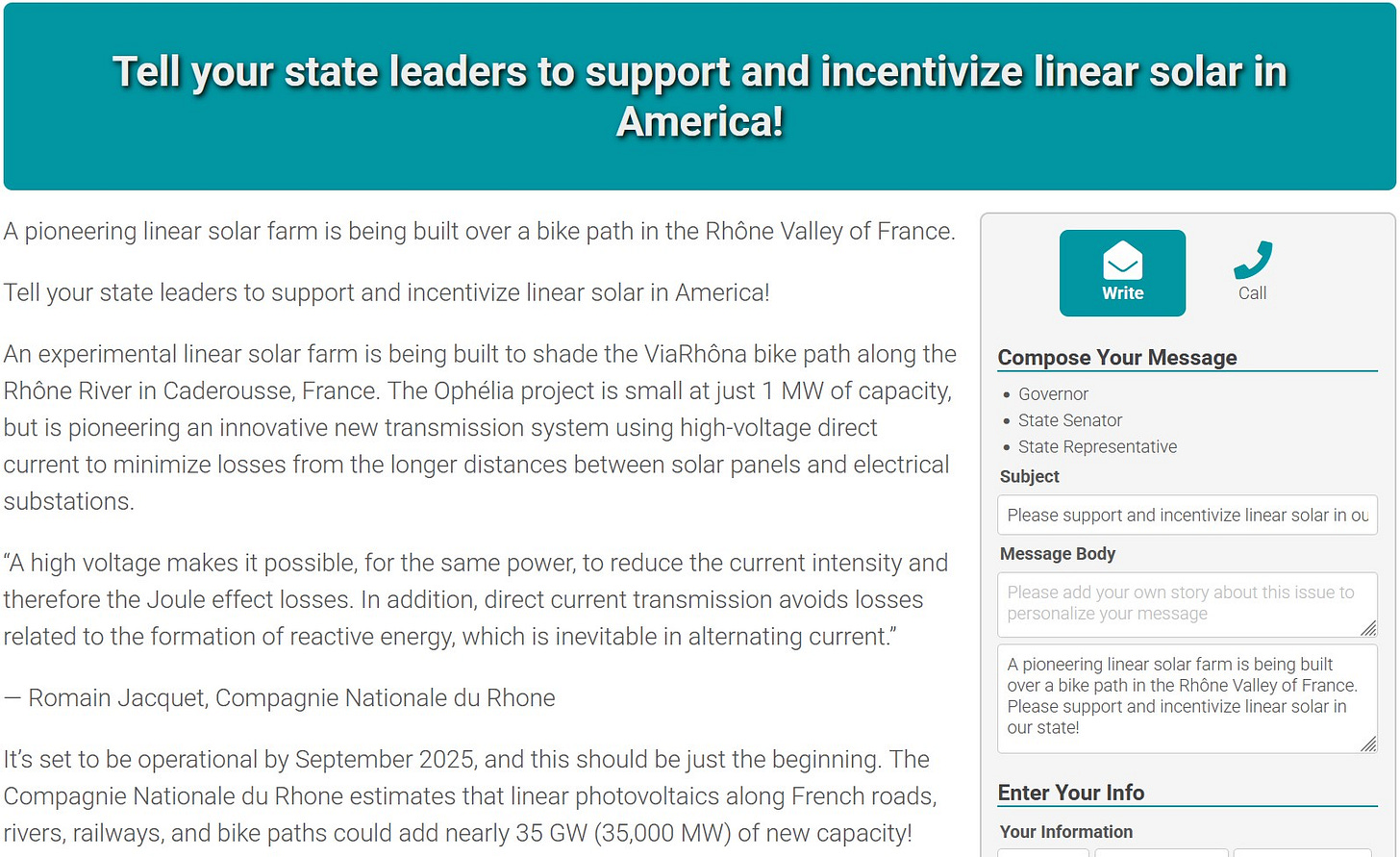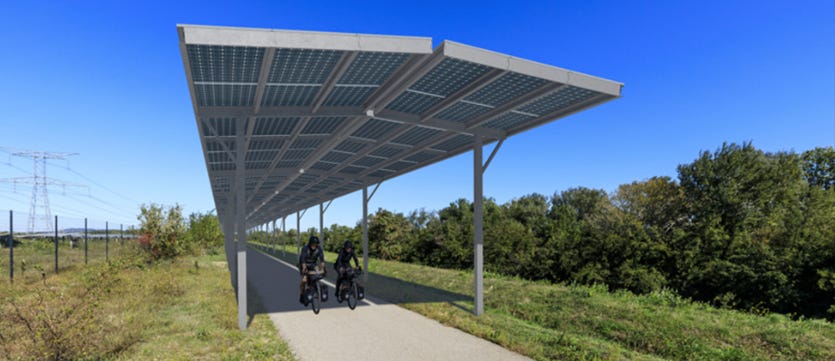Your Daily Dose of Climate Hope: February 3, 2025
A pioneering linear solar farm over a bike path in France!
A pioneering linear solar farm is being built over a bike path in the Rhône Valley of France.
Tell your state leaders to support and incentivize linear solar in America!
Touch or scan the QR code below to take today’s action in the app and earn trees!
Or take action on the Internet – no app required!
Reasons For Hope
An experimental linear solar farm is being built to shade the ViaRhôna bike path along the Rhône River in Caderousse, France. The Ophélia project is small, at just 1 MW of capacity, but is pioneering an innovative new transmission system using high-voltage direct current to minimize losses from the longer distances between solar panels and electrical substations.
“A high voltage makes it possible, for the same power, to reduce the current intensity and therefore the Joule effect losses. In addition, direct current transmission avoids losses related to the formation of reactive energy, which is inevitable in alternating current.”
— Romain Jacquet, Compagnie Nationale du Rhone
It’s set to be operational by September 2025, and this should be just the beginning. The Compagnie Nationale du Rhone estimates that linear photovoltaics along French roads, rivers, railways, and bike paths could add nearly 35 GW (35,000 MW) of new capacity!
This is great work - and it’s an idea worth spreading. There’s no serious “off-the- shelf” market-ready equipment readily available yet for linear solar farms like the Ophélia project, so preparing a friendly legal and regulatory environment could help kick off a virtuous cycle by showing that linear solar commercialization would be feasible in America.
Explicitly incentivizing linear photovoltaics in the U.S. - or just adding a few lines to state legal codes to clarify that linear solar farms would be included in state-level rebate programs and allowed by state regulations - could help empower American communities, companies, and co-ops to roll out linear solar farms like the Ophélia project, enabling future innovations.






